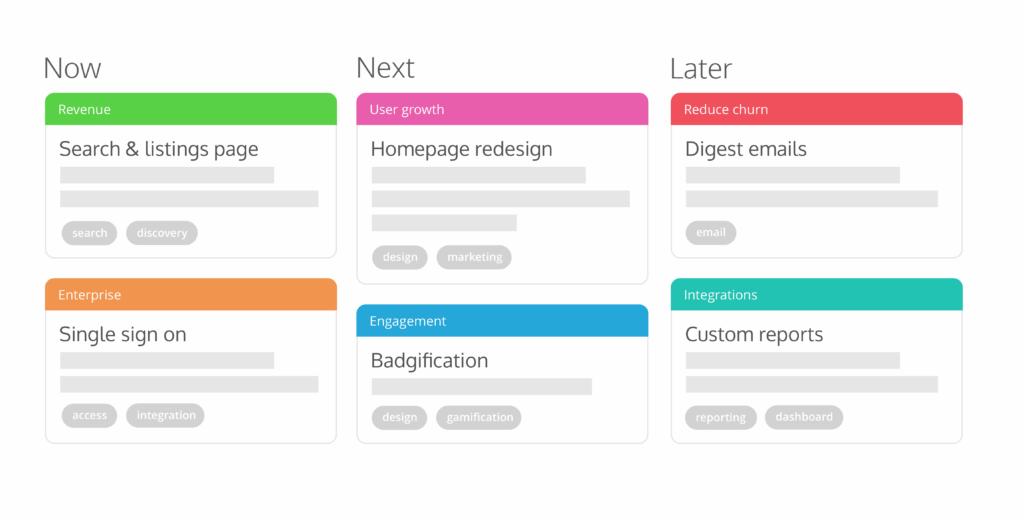Product roadmaps are an essential tool for product teams. They provide a clear vision of where the product is headed and what the team is working on at any given time. However, nothing is ever that simple. There are different approaches to creating and using product roadmaps, and each has its own set of strengths and weaknesses.

One common approach is the big picture roadmap, one that is focused on the long-term vision for the product and outlines major milestones and initiatives that will be delivered to achieve that vision. This type of roadmap -typically a Gantt chart- can be helpful in setting the overall direction for the product and ensuring that everyone is working towards the same goals. However, it can also be difficult to align the work of the team with the roadmap, as the specifics of what needs to be done at any given time will not be well defined and people reading the roadmap will get a false sense of certainty about work and dates as reflected on the document. Additionally, it will be hard to pivot or adapt to changing market conditions or new learning with a long-term roadmap that is set in stone.

Another approach is the agile roadmap, which is focused on short-term deliverables and prioritizes flexibility over long-term planning. This approach can be beneficial for teams that need to respond quickly to changing market conditions, but it can also lead to a lack of clear direction, lots of interruptions to answer questions from stakeholders looking for information beyond the scope of the roadmap, and a potential failure to achieve larger goals as they’re not visible in a roadmap of this kind.

A third approach, and my absolute favourite, is the now-next-later format. It combines both long-term vision and short-term work, with just the right level of detail for each of the 3 levels. This approach allows the team to work towards achieving the long-term vision while still being flexible enough to adapt to changes in the market and new learning and evidence. The team can focus on delivering value to customers in the short term, while also keeping an eye on the bigger picture and ensuring that everything they are working on is aligned with the overall goals for the product.

The now-next-later format is particularly effective for teams that are working on a product that is in a state of constant evolution, where new features and capabilities are continually being added. By keeping track of what is currently being worked on, what is coming next, and what is planned for the future, the team can ensure that they are always moving in the right direction and that each feature or capability they add is contributing to the overall vision for the product.
Now-next-later roadmaps provide a clear view of long-term vision and goals, while allowing for flexibility to adapt to changing market conditions. They provide a useful way to align the work of the team with the overall goals of the business: enabling the team to deliver value to customers in the short term while ensuring the wider business can understand how the work aligns with long-term business strategy and objectives. I’ve been using them exclusively since I first discovered them more than a decade ago now. Want to know more? Jenna Bastow invented Now Next Later, and has written a brilliant in-depth article about why she invented the format, and how to use it.

Leave a Reply